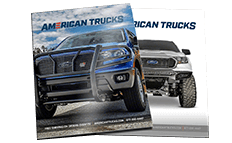
Choosing the Best Car Seat Covers for Your Vehicle
Car seat covers are a great investment for your vehicle. They can help protect your seats from wear and tear, spills, and stains, and can also enhance the overall look of your car's interior. But with so many options available, how do you choose the right car seat covers for your needs? In this guide, we'll explore different seat cover materials, custom vs. universal fit, and how to care for your seat covers.
Types of Car Seat Cover Materials
Car seat covers come in various materials, each with its advantages and disadvantages. The material you choose should align with your specific needs and lifestyle.
Leather
Leather seat covers offer a luxurious and sophisticated look for your car's interior. They are durable, easy to clean, and provide excellent protection against spills and stains. However, leather can become hot in the summer and cold in the winter, and it may require regular conditioning to maintain its suppleness.
Canvas
Canvas seat covers are known for their durability and resistance to water. They are an excellent choice if you want to keep your car seats dry. However, it's essential to note that the canvas used in seat covers is not the same as an artist's canvas. Canvas seat covers are typically made from cotton or a poly-cotton blend, and they are designed to be rugged and waterproof. They offer robust protection against spills and stains, making them a great choice for those with an active lifestyle.
Sheepskin
Sheepskin seat covers provide both comfort and style. While they were a popular choice in the 80s and 90s, modern sheepskin seat covers are more refined and well-fitted. Sheepskin is a natural insulator, keeping you cool in the summer and warm in the winter. While they are among the more expensive options, they require minimal care and are a long-lasting choice.
Mesh
Mesh seat covers mimic the look and feel of neoprene at a more affordable price point. They are lightweight, stretchy, and perforated, allowing for breathability. Mesh seat covers are easy to maintain and are available in various colors. However, they are not waterproof and may not be as durable as other materials.
Custom vs. Universal Fit Car Seat Covers
When choosing car seat covers, you'll also need to decide between custom-fit and universal-fit options.
Universal Car Seat Covers
Universal-fit seat covers are designed to fit a wide range of seat styles. They are typically less expensive than custom-fit covers and are readily available for immediate purchase. While they offer convenience and cost savings, they may not provide the same tailored fit as custom covers.
Custom Fit Car Seat Covers
Custom-fit seat covers are designed specifically for your vehicle's make and model. They offer a factory-like finish and ensure that all seat features, such as side airbags and armrests, are properly accommodated. While custom-fit covers tend to be more expensive and require a longer wait time, they provide the best fit and protection.
How to Care for Car Seat Covers
Proper maintenance is essential to keep your seat covers looking their best. Each material has its care requirements.
How To Clean Car Seats and Covers
Leather and leatherette seat covers can be wiped clean with a damp non-abrasive cloth. Avoid using soaps as they can dry out the material. Leather should be conditioned regularly to maintain its suppleness.
Canvas seat covers are usually treated to be waterproof. Spills should be cleaned promptly with a wet cloth, as allowing them to set can result in stains. If a more thorough cleaning is needed, a wipe-down with water and mild detergent can refresh them.
For nylon seat covers, such as Ballistic and Cordura, removal and machine-washing are recommended. Always follow the care instructions and hang the covers to dry. Avoid washing them with the seats still installed in the car.
Neoprene and neosupreme seat covers should not be machine-washed. Neoprene can be wiped clean with water, while neosupreme can be cleaned with mild detergent. Ensure thorough air-drying before reinstallation.
Sheepskin seat covers can be cared for by brushing them. Hand-wash in cold water with a touch of detergent if necessary. Sheepskin covers are known for their durability and minimal maintenance requirements.
Mesh seat covers are not machine-washable. They can be spot-treated with a moist cloth and mild detergent and then air-dried.
How Often Should You Clean Them?
If you've chosen the right seat covers, extensive cleaning shouldn't be necessary very often. Regular quick wipes for spills and routine car washes should suffice. Avoid full laundering more than once a year if possible.
How to Remove Stains
Handle stains promptly by following the care instructions provided by the manufacturer. Use a mild detergent and water for spot cleaning on nylon, canvas, neosupreme, and mesh seat covers. For genuine neoprene, use wetsuit cleaner exclusively to remove stains.
How to Repair Rips in Your Seat Covers
If your seat covers develop rips or tears, they can often be repaired. Ripped seams can be stitched back together, either by an auto upholsterer or with some DIY effort on lighter materials. For larger tears or cuts in the fabric, stitching it closed or sewing in a patch can provide a fix. While the repaired area may show some evidence of the damage, it can extend the lifespan of your seat covers.
After repairing any rips, consider treating the repaired area to restore its water resistance, if applicable.
When Is It Time to Replace Seat Covers?
Seat covers often come with manufacturer warranties against defects, typically ranging from 12 months to 3 years. While this warranty is helpful for unexpected issues, you may find it more practical to replace your seat covers if they develop multiple holes from wear or damage. Replacing damaged covers can improve the appearance of your car's interior and maintain a fresh look.
Ultimately, the lifespan of your car seat covers depends on how well you care for them. By choosing the right material, custom vs. universal fit, and following proper maintenance, you can protect your car's interior, keep it looking great, and potentially enhance its resale value.
Whether you prefer the luxury of leather, the durability of canvas, or the affordability of mesh, ensure that your seat covers receive the care they deserve for long-lasting protection and style.


